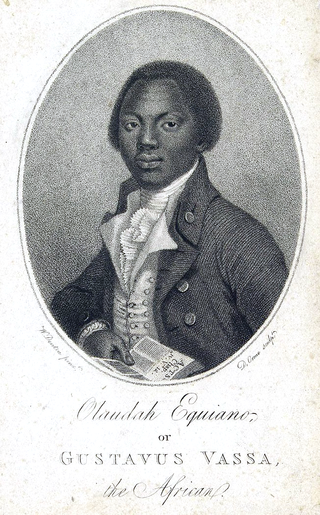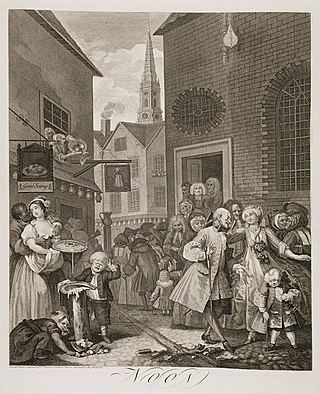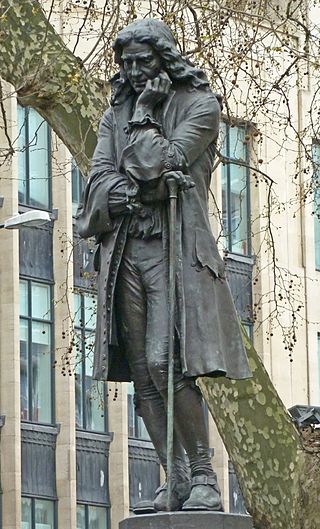Related Research Articles

Thomas Clarkson was an English abolitionist, and a leading campaigner against the slave trade in the British Empire. He helped found the Society for Effecting the Abolition of the Slave Trade and helped achieve passage of the Slave Trade Act 1807, which ended British trade in slaves.

Olaudah Equiano, known for most of his life as Gustavus Vassa, was a writer and abolitionist from, according to his memoir, the village of Essaka in modern southern Nigeria. Enslaved as a child in Africa, he was shipped to the Caribbean and sold to a Royal Navy officer. He was sold twice more before purchasing his freedom in 1766.

The Zong massacre was a mass killing of more than 130 enslaved African people by the crew of the British slave ship Zong on and in the days following 29 November 1781. The William Gregson slave-trading syndicate, based in Liverpool, owned the ship as part of the Atlantic slave trade. As was common business practice, they had taken out insurance on the lives of the enslaved Africans as cargo. According to the crew, when the ship ran low on drinking water following navigational mistakes, the crew threw enslaved Africans overboard.

Ottobah Cugoano, also known as John Stuart, was an abolitionist, political activist, and natural rights philosopher from West Africa who was active in Great Britain in the latter half of the 18th century.

Slave ships were large cargo ships specially built or converted from the 17th to the 19th century for transporting slaves. Such ships were also known as "Guineamen" because the trade involved human trafficking to and from the Guinea coast in West Africa.

The Interesting Narrative of the Life of Olaudah Equiano, Or Gustavus Vassa, The African, first published in 1789 in London, is the autobiography of Olaudah Equiano. The narrative is argued to represent a variety of styles, such as a slavery narrative, travel narrative, and spiritual narrative. The book describes Equiano's time spent in enslavement, and documents his attempts at becoming an independent man through his study of the Bible, and his eventual success in gaining his own freedom and in business thereafter.
Alexander Falconbridge was a British surgeon who took part in four voyages in slave ships between 1782 and 1787. In time he became an abolitionist and in 1788 published An Account of the Slave Trade on the Coast of Africa. In 1791 he was sent by the Anti-Slavery Society to Granville Town, Sierra Leone, a community of freed slaves, where he died a year later in 1792.

The Society for Effecting the Abolition of the Slave Trade, also known as the Society for the Abolition of the Slave Trade, and sometimes referred to as the Abolition Society or Anti-Slavery Society, was a British abolitionist group formed on 22 May 1787. The objective of abolishing the slave trade was achieved in 1807. The abolition of slavery in all British colonies followed in 1833.

The history of African presence in London may extend back to the Roman period.

Bristol, a port city in south-west England, was involved in the transatlantic slave trade. Bristol's part in the trade was prominent in the 17th and 18th centuries as the city's merchants used their position to gain involvement. It is estimated that over 500,000 enslaved African people were traded by Bristol merchants.

The Igbo of Igboland became one of the principal ethnic groups to be enslaved during the Atlantic slave trade. An estimated 14.6% of all slaves were taken from the Bight of Biafra, a bay of the Atlantic Ocean that extends from the Nun outlet of the Niger River (Nigeria) to Limbe (Cameroon) to Cape Lopez (Gabon) between 1650 and 1900. The Bight’s major slave trading ports were located in Bonny and Calabar.
Igbo people in Jamaica were shipped by Europeans onto the island between the 18th and 19th centuries as enslaved labour on plantations. Igbo people constituted a large portion of the African population enslaved people in Jamaica. Jamaica received the largest amount of slaves from the biafra region than anywhere else in the diaspora during the slave trade. Some slave censuses detailed the large number of enslaved Igbo people on various plantations throughout the island on different dates throughout the 18th century. Their presence was a large part in forming Jamaican culture, Igbo cultural influence remains in language, dance, music, folklore, cuisine, religion and mannerisms. In Jamaica the Igbo were often referred to as Eboe or Ibo. There are a substantial number of Igbo language loanwords in Jamaican Patois. Igbo people mostly populated the northwestern section of the island.

The Sons of Africa were a late-18th-century group in Britain that campaigned to end African chattel slavery. The "corresponding society" has been called the Britain's first black political organisation. Its members were educated Africans in London, including formerly enslaved men such as Ottobah Cugoano, Olaudah Equiano and other leading members of London's black community.

A scramble was a particular form of slave auction that took place during the Atlantic slave trade in the European colonies of the West Indies and the domestic slave trade of the United States. It was called a "scramble" because buyers would run around in an open space all at once to gather as many bondspeople as possible. Another name for a scramble auction is "Grab and go" slave auctions. Slave ship captains would go to great lengths to prepare their captives and set prices for these auctions to make sure they would receive the highest amount of profits possible because it usually did not involve earlier negotiations or bidding.

John Kimber was the captain of a British slave ship who was tried for murder in 1792, after the abolitionist William Wilberforce accused him of torturing to death an enslaved teenaged girl on the deck of his ship. Kimber was acquitted, but the trial gained much attention in the press. The case established that slave ships' crew could be tried for murder of slaves.
The iron bit, also referred to as a gag, was used by enslavers and overseers as a form of punishment on slaves in the Southern United States. The bit, sometimes depicted as the scold's bridle, uses similar mechanics to that of the common horse bit. The scolds bridle however, is almost always associated with its use on women in the early 17th century and there are very few accounts of the device as a method of torture against black slaves under that particular name. As opposed to the whip, the iron bit lacks the historic, social, and literary symbolic fame that would make information on the use of the iron bit as accessible. Its use throughout history has warranted some attention though, mostly from literary texts. Even earlier, slave narratives and publications of newspapers and magazines from the 18th century on give evidence of this device being used to torture and punish slaves.

The Slave Trade Act 1788, also known as the Regulated Slave Trade Act 1788 or Dolben's Act, was an Act of Parliament that limited the number of enslaved people that British slave ships could transport, based on the ships' tons burthen (bm). It was the first British legislation passed to regulate slave shipping.

Abolitionism in the United Kingdom was the movement in the late 18th and early 19th centuries to end the practice of slavery, whether formal or informal, in the United Kingdom, the British Empire and the world, including ending the Atlantic slave trade. It was part of a wider abolitionism movement in Western Europe and the Americas.
James Tobin (1736/7–1817) was a prominent merchant and planter based in Nevis. During his life, he became one of the most prominent proslavery activists from the West Indies.

George Case (1747–1836) was a British slave trader who was responsible for at least 109 slave voyages. Case was the co-owner of the slave ship Zong, whose crew perpetrated the Zong massacre. After the massacre, the ship owners went to court in an attempt to secure an insurance payout of £30 for each enslaved person murdered. A public outcry ensued and strengthened the abolition movement in the United Kingdom. In 1781, he became Mayor of Liverpool. After he died, the wealth generated by his slavery was bequeathed to the Case Fund by his grandson.
References
- 1 2 Evans, Gareth (8 April 2022). "The Meaning of Zong review – a masterful meditation on the legacy of slavery". The Guardian. Retrieved 20 June 2022.
- 1 2 Terera, Giles (2022). The Meaning of Zong. London: Nick Hern Books.
- 1 2 Phillips, Joan (2 April 2022). "The Meaning of Zong". British Theatre Guide. Retrieved 20 June 2022.
- ↑ The Meaning of Zong: Programme. Bristol: Bristol Old Vic. 2022.
- ↑ Akbar, Arifa (21 March 2022). "'It was shameful I didn't know about it': Hamilton's Giles Terera on the Zong massacre". The Guardian. Retrieved 20 June 2022.
- ↑ "The Meaning of Zong". Bristol Old Vic. Retrieved 20 June 2022.
- 1 2 Farell Roig, Estel (8 April 2022). "The Meaning of Zong is another triumph by the Bristol Old Vic". Bristol Post. Retrieved 20 June 2022.
- ↑ "The Meaning of Zong". Drama on 3. BBC. Retrieved 20 June 2022.
- ↑ "The Meaning Of Zong Postponed Until April 2022". Bristol Old Vic. 26 July 2021. Retrieved 2 May 2023.
- ↑ McMillan, Joyce (15 April 2022). "Theatre reviews: The Meaning of Zong". The Scotsman. Retrieved 20 June 2022.
- ↑ Grant, Peter (11 May 2022). "REVIEW: 'The Meaning of Zong' at Liverpool Playhouse". Wirral Globe. Retrieved 22 June 2022.